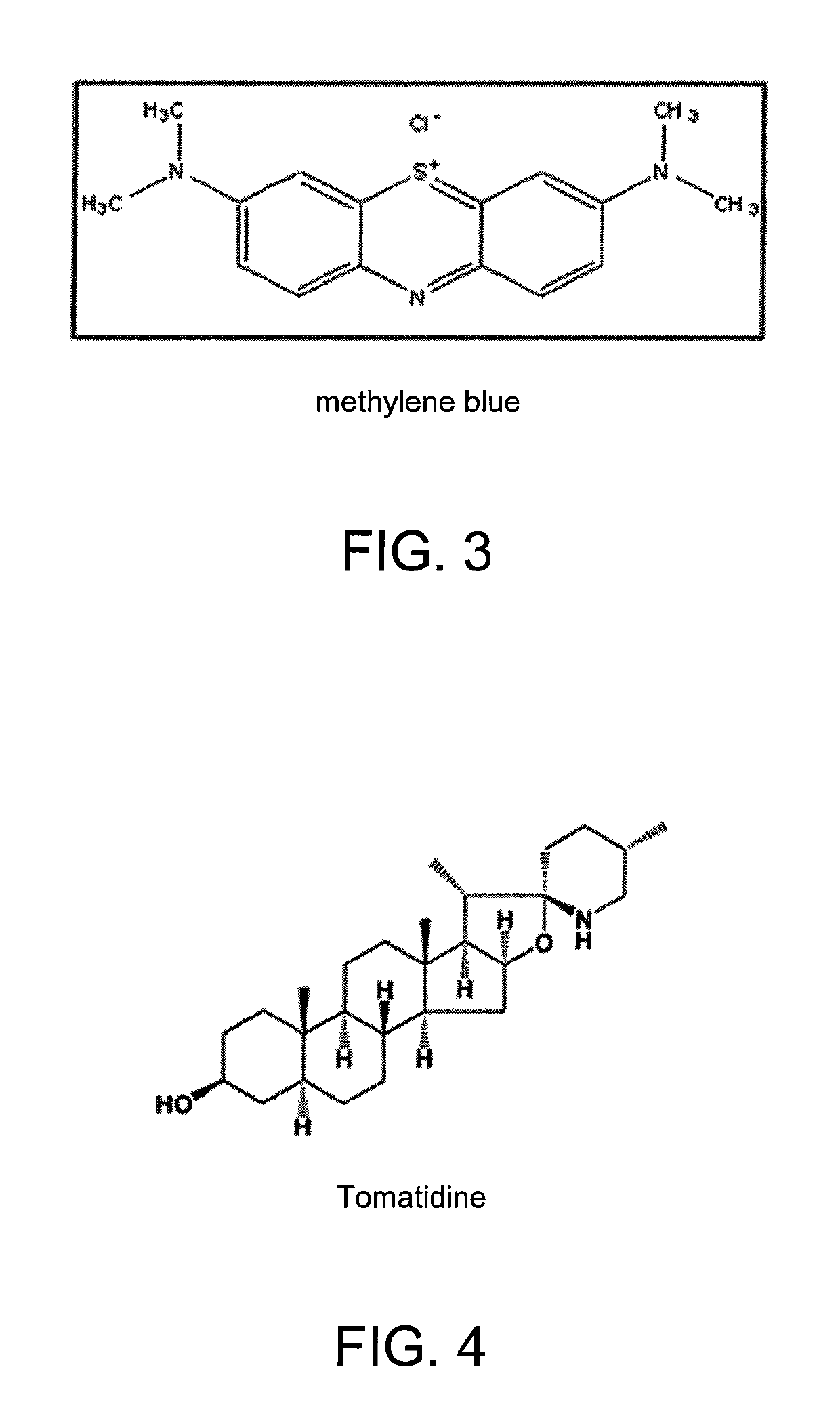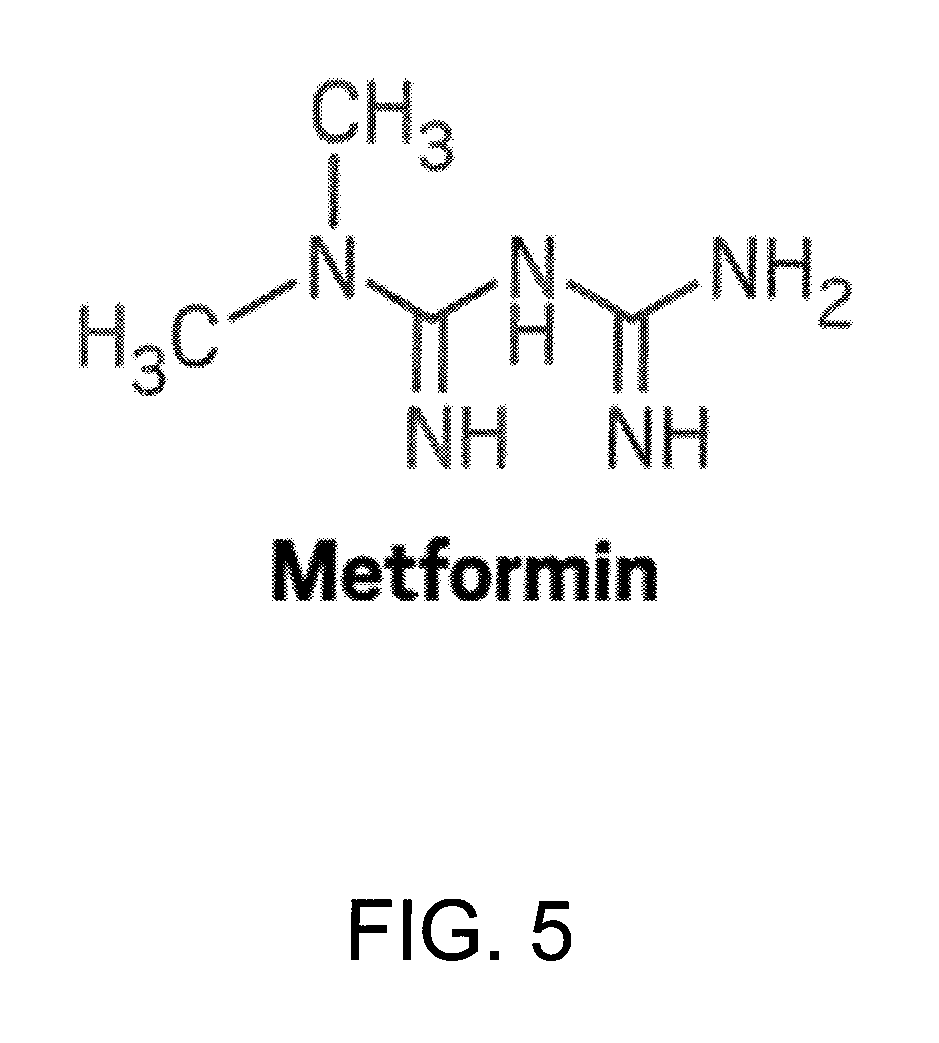[0015]Extending healthy life by slowing aging is the most efficient way to combat fatal and disabling pathologies, such as cancer, that plague the elderly human population. Thus, one aspect of the present invention is directed not to overcoming age-associated pathologies one-by-one, but rather, to prevent or delay age-related pathologies in general, thus more effectively addressing the commonplace chronic disorders experienced by the elderly. The present invention therefore represents a paradigm shift in the current public health strategy, which is targeted to the prevention of particular disorders, which even if successful, leaves an individual susceptible to other comorbidities that inevitably substitute for the pathology being treated. In various embodiments of the present invention, a method and system is provided that treats age-related disease by increasing the healthspan of a human individual. In various embodiments, rapamycin (sirolimus) is administered to an individual via a person's microbiome by employing microbes, and in particular bacteria modified to produce rapamycin and preferrably other anti-aging agents, to achieve this objective.
[0017]The tomato belongs to the Solanaceae family that includes more than 3,000 species. Tomato fruit consumption has been associated with a reduced risk of inflammatory processes, cancer, and chronic noncommunicable diseases (CNCD) including cardiovascular diseases (CVD) such as coronary heart disease, hypertension, diabetes, and obesity. Tomatidine is found in certain plants at certain developmental stages, such as in green (but not ripened red) tomatoes. One aspect of the present invention is directed to the provision to individuals in need thereof with bacteria that have been modified to produce effective amounts of tomatidine to address the muscle atrophy associated with various cancers. In one embodiment, DNA encoding tomatidine or its analogs is inserted into the genome of one or more bacterial species by employing CRISPR-Cas or Cfl1 systems, such that an individual can orally take a pill containing such modified bacteria (preferably bacteria of the same species as presently reside in the individual's gut microbiome) and in such a manner, administer tomatidine to the individual in a manner that does not require injections or the taking of traditional pharmaceutical formulations containing tomatidine. In such a manner, the production by such bacteria inside the individual provides a more natural way for tomatidine to be provided to those in need of its extraordinary abilities to foster the retention of muscle mass in the individual. The ability to further modify the populations of bacteria inside an individual via the use of particular antibiotics, for example, those that can target the modified species that produce tomatidine, provides a way to control the amount of tomatidine in the individual's body. Tomatidine in this instance, is but one of many examples of how the personal microbiome of an individual can be amended, modified, enhanced and / or changed to adjust the levels and amounts of various compounds, drugs, molecules, etc. that are important in maintaining or restoring health to an individual.
[0021]In certain embodiments, and while not bound by theory, it is believed that tomatidine increases the ability of an individual to maintain muscle mass, while rapamycin, as an inhibitor of mTOR, which increases the production of muscle proteins, reduces the growth of muscles. It is believed that these two agents may play parallel but separate roles in muscle atrophy, and thus, the use of both of these agents to address cancer, cachexia and aging is one particular aspect of the present invention.
[0023]As described herein, p53 has apotoptic characteristics and effectively keeps cancer growth in check by preventing cells from growing uncontrollably. In a somewhat similar manner, rapamycin also may be employed to regulate growth (e.g. by inhibiting growth of particular cells). Thus, the combination of rapamycin and p53 expression via cells of an individual;s microbiome provides two agents that are critical components in cell growth and apotosis events at the core of cancer treatments. Effective administration of cells (or microbes) of a person's microbiome via the purposeful administration of such cells (which have been modified, preferrably via CRISPR-Cas systems) to express therapeutically effective amounts of either or both p53 and rapamycin, is believed to provide an effective treatment for various cancerous conditions.
[0024]It is noted that caloric restriction would seem to negatively affect the growth of an organism and detrimentally affect the protein expression that would otherwise ensue in a well-fed individual. Rapamycin is a growth inhibitor, and thus, one would similarly conclude that the employment of such an agent would reduce the expression of proteins, such as those that are employed to build muscle. Moreover, p53 is an agent that generates cell death via apoptosis, and thus, would be viewed as an anti-growth factor in terms of cell survival. And yet all three of these agents are considered instrumental in both the aging process as well as in cancer. As cancer and aging are linked on certain levels, so too are the above referenced agents. The employment of these agents, especially by their purposeful expression via an individual's modified microbiome, provides a unique and effective way in which to combat both cancer and aging.
[0026]The administration of such compounds / agents via an individual's microbiome is believed to positively affect the extending of the lifespan of an individual, and especially effective in delaying the onset of age-related diseases and conditions, such as cancer, thus extending the healthspan of the individual from what it otherwise would have been if such administration was not performed. The particular effective amount of such agents / compounds, such as rapamycin (including analog or derivatives thereof) depend upon the disease to be treated, the length of duration desired and the particular characteristics of the individual's microbiome—and which of the one or more various microbiomes of the person may be the source of the administration. In certain embodiments where the agent / compound comprises rapamycin or an analog thereof, administration of rapamycin may be performed to effect about 0.001 mg to 30 mg total per day as an effective dose, preferrably at least about 0.1 mg per day, with a preferred blood level of rapamycin in the subject being about 0.5 ng per mL whole blood after administration of the composition after a 24 hour period. By administering antibiotics that target the particular microbes that produce such agents / compounds (e.g. rapamycin) one can address overproduction by such microbes by killing the microbes producing such agents. Various other embodiments are directed to the skin microbiome of a person so as to address diseases of the skin, including but not limited to skin cancer. The lactic acid bacteria Streptococcus thermophilus has been found to increase ceramide production in the skin. Ceramides are known to play an essential role in structuring and maintaining the water permeability barrier function of skin. With aging, the total ceramide content of skin, along with the skin's ability to function as a barrier, decreases. Certain embodiments are directed to ceramide supplementation via a subject's microbiome to improve skin barrier function.
 Login to View More
Login to View More 


